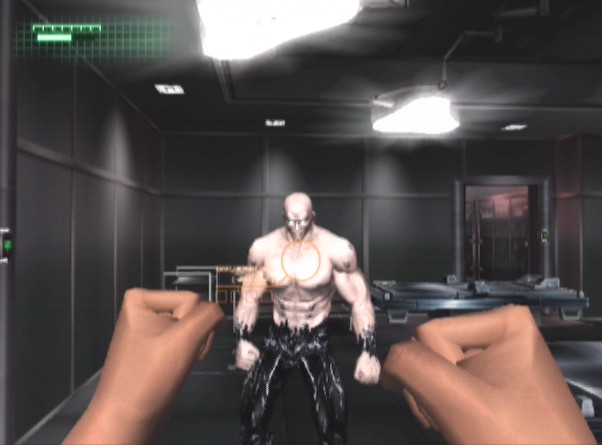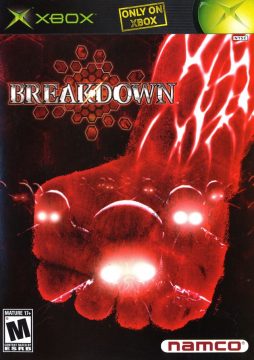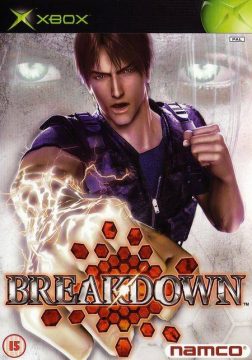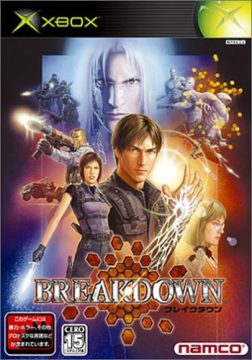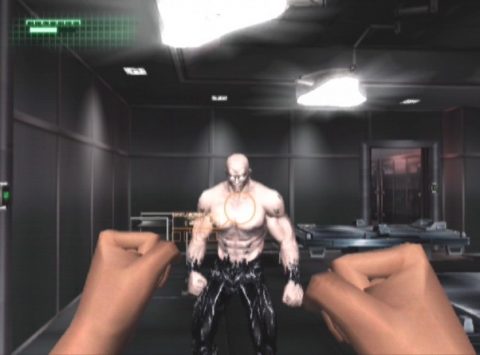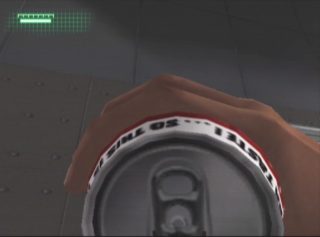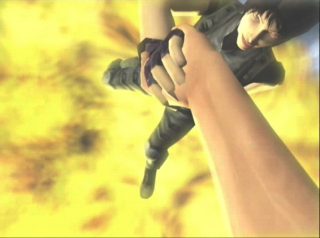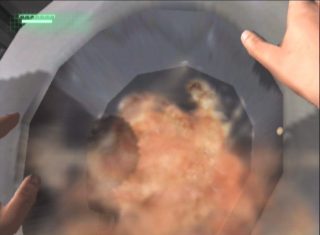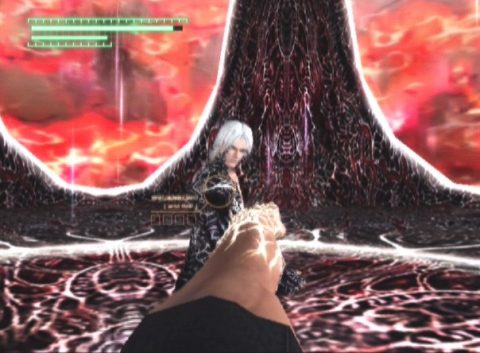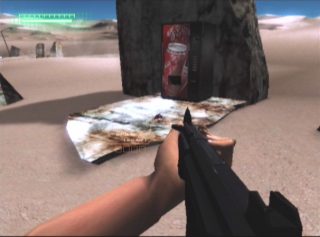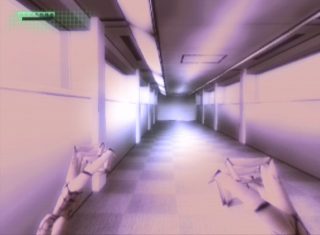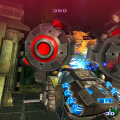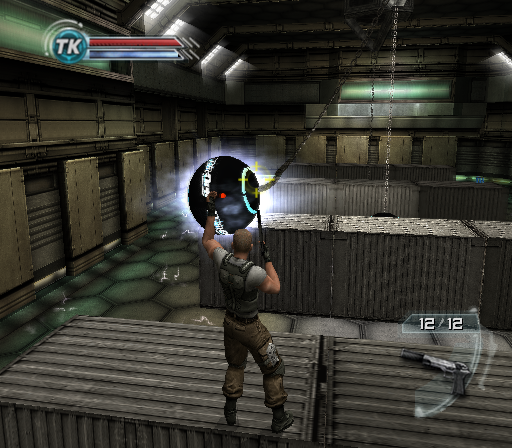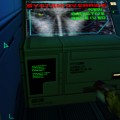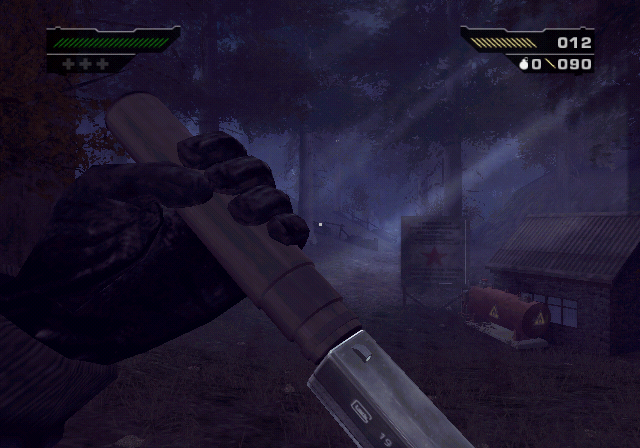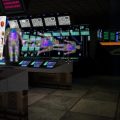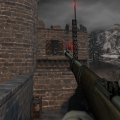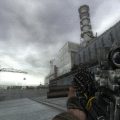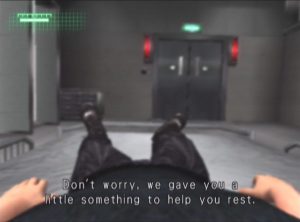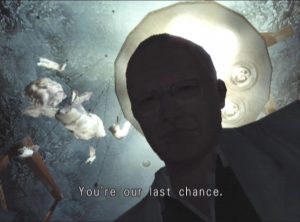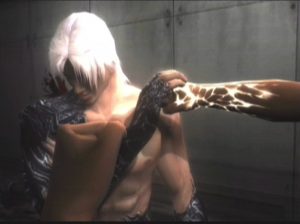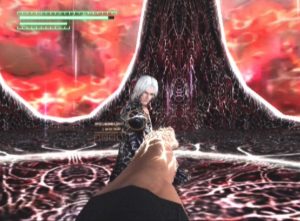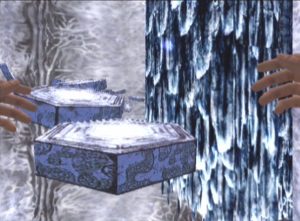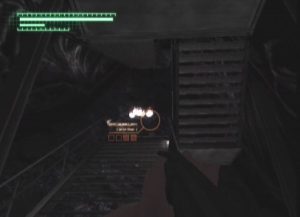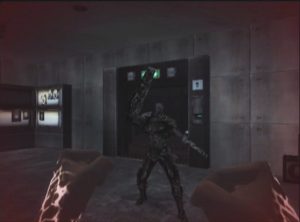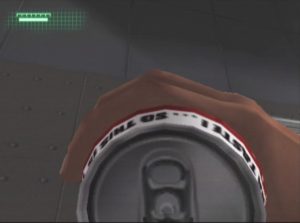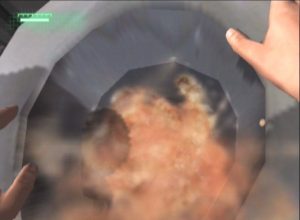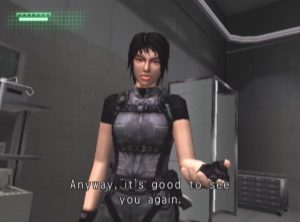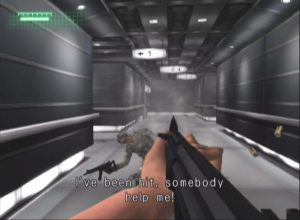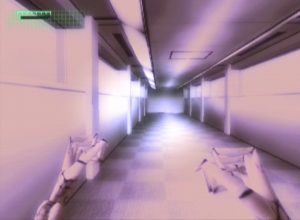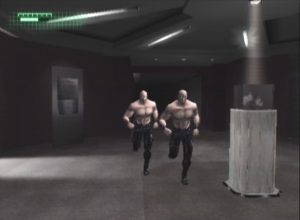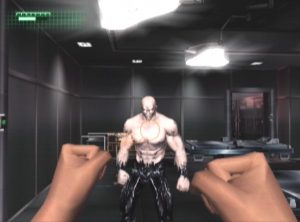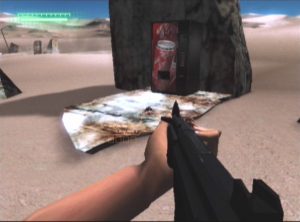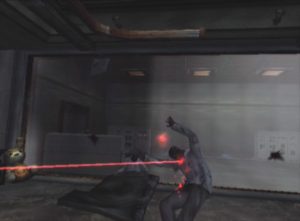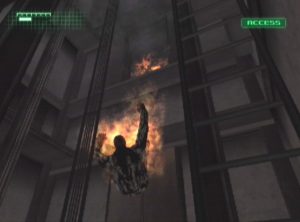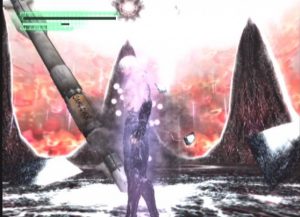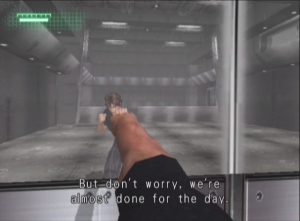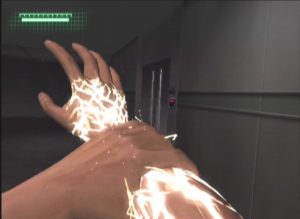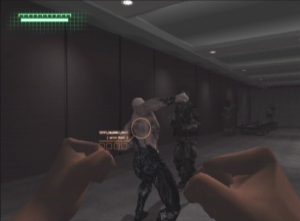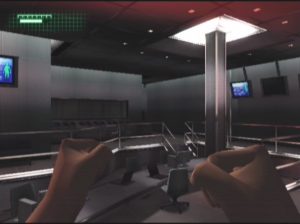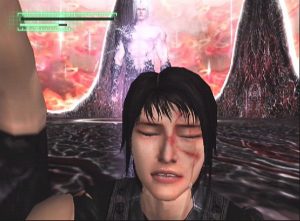Namco’s Xbox title Breakdown is something of a tremendous paradox. At times, you’ll be shaking your head in extraordinary boredom; at others, you’ll be experiencing some of the best moments video gaming has to offer. Nevertheless, despite the incredible unevenness Breakdown is a game you’ll want to experience.
Breakdown begins with the usual amnesiac who apparently is some kind of government experiment. Rescued by the mysterious Alex, who literally falls in from nowhere, you have to escape your captors, though more importantly, evade the ruthless alien beings known as the T’Lan. Not only are these guys invincible, they are bent on destroying pretty much everything. However, your arm starts to glow and all of a sudden you realize you’re the only one with the power to stop them.
Characters
Derrick
This is you. Get a good look at yourself, because other than the intro, some mirrors, and one rather keen out of body experience, this is all you’ll see, since the game doesn’t leave your viewpoint.
Alex
A bad ass lady that comes out of nowhere to save your hide. Perhaps one of the few computer controller companions that is reasonably competent. Also notable because a computer generated character does a more convincing job as a Trinity-like character than Carrie-Anne Moss ever did in The Matrix movies.
Breakdown is notable because it’s a first person game that hails from a Japan – a nation notoriously scared of Doom, Halo, and other staples of the Western diet. It’s clearly meant to be modeled after Half Life, right up to the amusing deaths of random NPCs, all while infused with the stronger narrative that is typical of Japanese RPGs. Since the viewpoint never strays from your eyes, everything you do is experienced first person. When you get hurt, the screen doesn’t just flash – you’re knocked flat on your back before you climb back up to your feet. When you climb up a ledge, you see every motion as your character pulls himself up, over, and back onto his feet. Everything is meticulous, almost to the point of absurdity; before consuming a health item (numerous Coke machines litter the landscape, thankfully), you pick it up, hold it in your hand to examine it, and then drink it. It sounds a bit laborious, but the overall immersion factor is worth it.
Though relative to the immersion, those are just the minor details; more poignant are the cinemas – all done completely in first person as well. All of a sudden every action has a lot more impact – when a character shakes you violently to wake up, or someone dies right at your feet, you’re not just viewing it from a camera, you’re seeing it yourself. The emotional impact is truly incredible. And it really surprises that me that with all the reliance on cinematics in recent games, other developers haven’t taken the same the same steps.
Fun Things To Do In Breakdown:
Drink some soda
Jump away from exploding buildings
Vomit profusely
Calling Breakdown a first person shooter would be slightly inaccurate – it’s really more of a first person puncher. While you do get a small stable of weaponry, most of the bad guys you face are completely impervious to formerly devastating devices such as rocket launchers; instead, you kill them by beating them to death with your fists of super strength. This may sound like a recipe for disaster, and while it’s not perfect, it comes off far better than you would initially imagine.
Each of the triggers controls one of your fists, which you can use with the analog pad to perform of variety of uppercuts, backhands, and even head-slamming kicks. Holding down the analog stick will let you block, something the enemies can do as well. You can even back flip and somersault, lending a feeling of maneuverability usually never seen in this genre. As you progress through the game, you get a few fancy moves, including jump kicks, energy blasts, and even a particularly awesome maneuver where you impale a bad guy on your fist and slam him straight into the pavement. Unfortunately, the game has a tendency to inundate you with a lot of bad guys at the same time, especially ones who will pound you with laser blasts from distance. Trying to figure out the most efficient way to deal with these situations is part of the game’s challenge, but it’s no fun being surrounded by multiple enemies who smack you into oblivion before you have time to think. To counteract this, you get an energy wave that knocks down everything around you, though it is in limited supply. Parts are made easier by the presence of Alex, who is actually extraordinarily useful, but she’s absent for a good part of the game.
As mentioned, there are a few weapons other than your fists of fury. This aspect of Breakdown is particularly weird because there’s a strict auto aiming system built in. You can cycle through targets with the A button, and a little indicator highlights the accuracy of whomever you’re shooting to kill. You can choose to aim without it, but since the game refuses to provide a targeting reticule, it’s a little more difficult than it needs to be. In other words, PC FPS nerds will cry fowl immediately, but it actually makes things quite a bit easier, especially with the concentration on melee combat.
While the action is a good idea just done a little awkwardly, Breakdown begins to fall apart when it comes to the design and pacing. For being such a high concept game, it really seems like Namco gave the project to a bunch of computer science interns. The character models are borderline amazing, but the environments are almost always uniformly boring, with the same texture plastered over repetitive landscapes – and despite the lack of graphical detail, it only runs at 30 FPS. The level design is also quite bad – you go through long stretches of the same boring area.
What really keeps you playing, though, is the story. There’s enough mystery and intrigue going on to keep your interest, with some time travel and vague philosophical concepts thrown in. The first person perspective does wonders for the emotional impact of the plot and characters, but even that falls victim of the game’s terrible pacing. As you begin to reach the climax of the game, you’re sent BACK to replay one of the most tedious section of the whole game. The long stretches definitely pad the game out – it takes at least twelve hours to play through – but developers still need to learn that sometimes less is more.
But for every hour of soporific wandering, Breakdown will then place you in some incredibly amazing situation modeled after the most intense sequences in the best action movies. Just try scrambling through a room filled with invincible bad guys, as you try to slowly get through a door that just won’t open; or being stalked in the sewers by almost completely invisible (though easily killed) aliens. At one part of the game, you’re stuck in a maze, slowly being stalked by Solus. He sorta traipses along, so he doesn’t seem like much of a threat, but you know that if you hit a dead end you’re a goner. As you scramble through the passages, you hear him crush enemy soldiers and walk unscathed through trip wires that would’ve annihilated you. It’s one of those creepy sequences that rivals some of the best moments in survival horror. There are even a few excellent driving sequences where you attempt to jump over broken bridges or escape from an exploding complex.
Even cooler are the Eternal Darkness-esque insanity effects and dream sequences. The screen turns to white noise and you emerge in areas that aren’t quite right, such as when a desert mysteriously appears in the middle of an office building.
Coke machines in the middle of the desert are actually a good idea
Random x-ray hallucinations
Overall, there are a lot of moments in Breakdown that would probably cause most people to give up in frustration, whether it be from the aggravation of the battle system or the overall dullness of the environments… but don’t. It may sound like a bit of a trial, but Breakdown is a truly amazing game, an experiment that doesn’t quite succeed but does more right than wrong. Unfortunately Namco never quite followed up on it, leaving this as just an interesting one-off.
